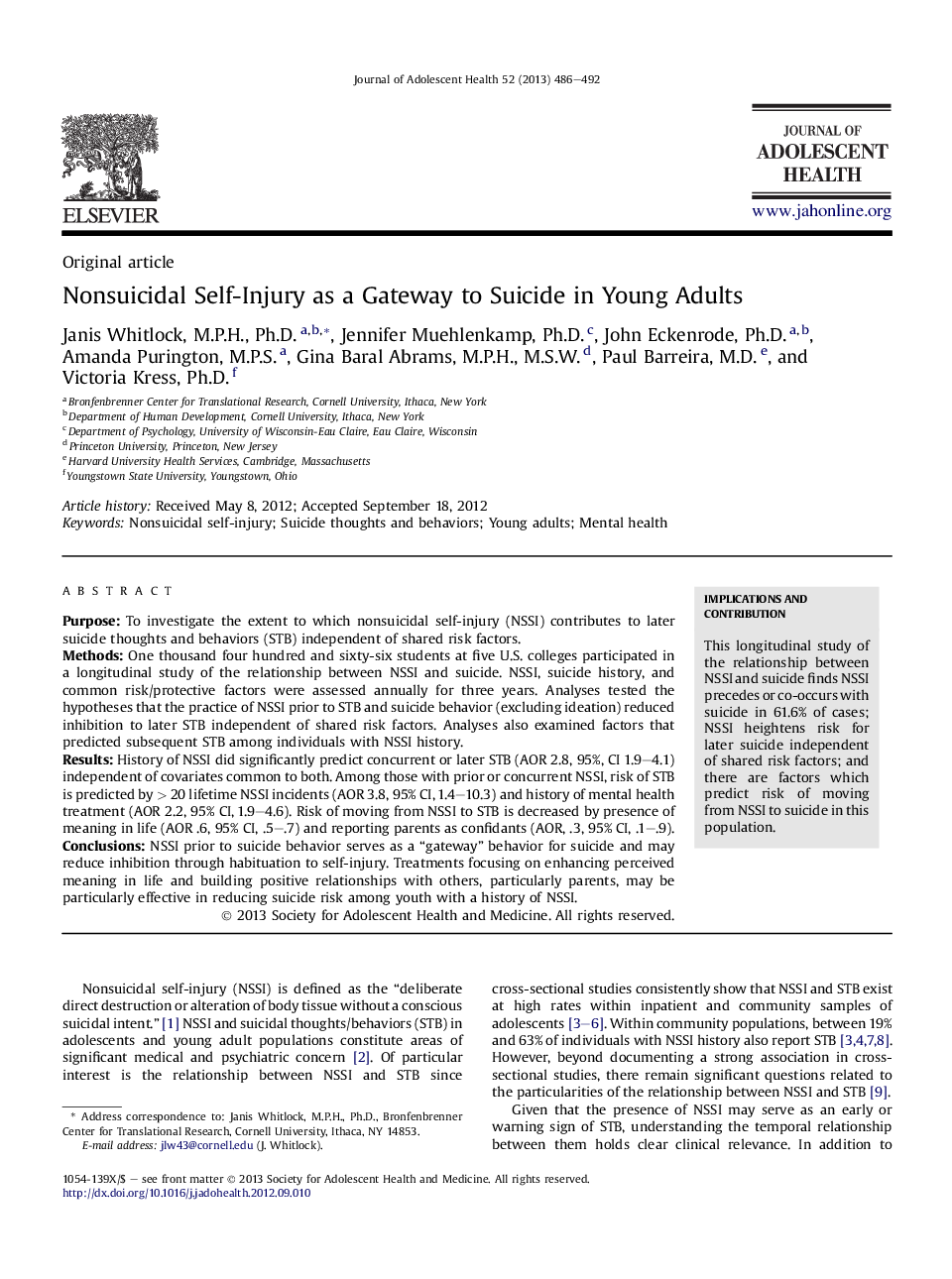| Article ID | Journal | Published Year | Pages | File Type |
|---|---|---|---|---|
| 1079414 | Journal of Adolescent Health | 2013 | 7 Pages |
PurposeTo investigate the extent to which nonsuicidal self-injury (NSSI) contributes to later suicide thoughts and behaviors (STB) independent of shared risk factors.MethodsOne thousand four hundred and sixty-six students at five U.S. colleges participated in a longitudinal study of the relationship between NSSI and suicide. NSSI, suicide history, and common risk/protective factors were assessed annually for three years. Analyses tested the hypotheses that the practice of NSSI prior to STB and suicide behavior (excluding ideation) reduced inhibition to later STB independent of shared risk factors. Analyses also examined factors that predicted subsequent STB among individuals with NSSI history.ResultsHistory of NSSI did significantly predict concurrent or later STB (AOR 2.8, 95%, CI 1.9–4.1) independent of covariates common to both. Among those with prior or concurrent NSSI, risk of STB is predicted by > 20 lifetime NSSI incidents (AOR 3.8, 95% CI, 1.4–10.3) and history of mental health treatment (AOR 2.2, 95% CI, 1.9–4.6). Risk of moving from NSSI to STB is decreased by presence of meaning in life (AOR .6, 95% CI, .5–.7) and reporting parents as confidants (AOR, .3, 95% CI, .1–.9).ConclusionsNSSI prior to suicide behavior serves as a “gateway” behavior for suicide and may reduce inhibition through habituation to self-injury. Treatments focusing on enhancing perceived meaning in life and building positive relationships with others, particularly parents, may be particularly effective in reducing suicide risk among youth with a history of NSSI.
